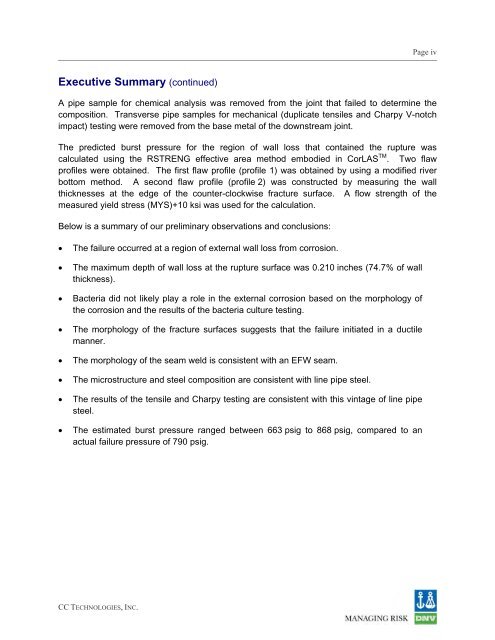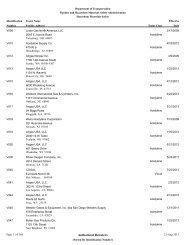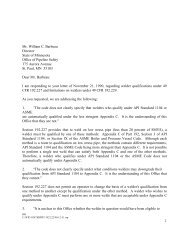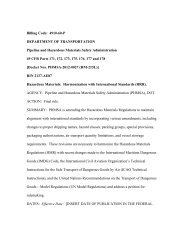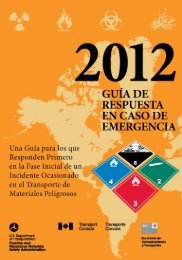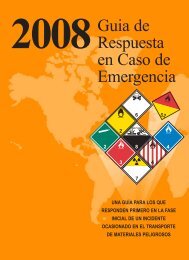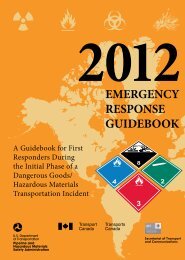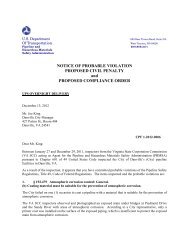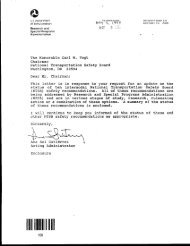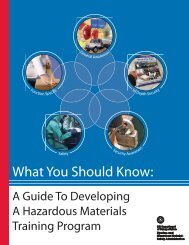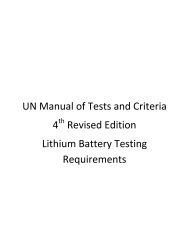Pipeline Failure Investigation Report - PHMSA - U.S. Department of ...
Pipeline Failure Investigation Report - PHMSA - U.S. Department of ...
Pipeline Failure Investigation Report - PHMSA - U.S. Department of ...
You also want an ePaper? Increase the reach of your titles
YUMPU automatically turns print PDFs into web optimized ePapers that Google loves.
Page iv<br />
Executive Summary (continued)<br />
A pipe sample for chemical analysis was removed from the joint that failed to determine the<br />
composition. Transverse pipe samples for mechanical (duplicate tensiles and Charpy V-notch<br />
impact) testing were removed from the base metal <strong>of</strong> the downstream joint.<br />
The predicted burst pressure for the region <strong>of</strong> wall loss that contained the rupture was<br />
calculated using the RSTRENG effective area method embodied in CorLAS TM . Two flaw<br />
pr<strong>of</strong>iles were obtained. The first flaw pr<strong>of</strong>ile (pr<strong>of</strong>ile 1) was obtained by using a modified river<br />
bottom method. A second flaw pr<strong>of</strong>ile (pr<strong>of</strong>ile 2) was constructed by measuring the wall<br />
thicknesses at the edge <strong>of</strong> the counter-clockwise fracture surface. A flow strength <strong>of</strong> the<br />
measured yield stress (MYS)+10 ksi was used for the calculation.<br />
Below is a summary <strong>of</strong> our preliminary observations and conclusions:<br />
• The failure occurred at a region <strong>of</strong> external wall loss from corrosion.<br />
• The maximum depth <strong>of</strong> wall loss at the rupture surface was 0.210 inches (74.7% <strong>of</strong> wall<br />
thickness).<br />
• Bacteria did not likely play a role in the external corrosion based on the morphology <strong>of</strong><br />
the corrosion and the results <strong>of</strong> the bacteria culture testing.<br />
• The morphology <strong>of</strong> the fracture surfaces suggests that the failure initiated in a ductile<br />
manner.<br />
• The morphology <strong>of</strong> the seam weld is consistent with an EFW seam.<br />
• The microstructure and steel composition are consistent with line pipe steel.<br />
• The results <strong>of</strong> the tensile and Charpy testing are consistent with this vintage <strong>of</strong> line pipe<br />
steel.<br />
• The estimated burst pressure ranged between 663 psig to 868 psig, compared to an<br />
actual failure pressure <strong>of</strong> 790 psig.<br />
CC TECHNOLOGIES, INC.


